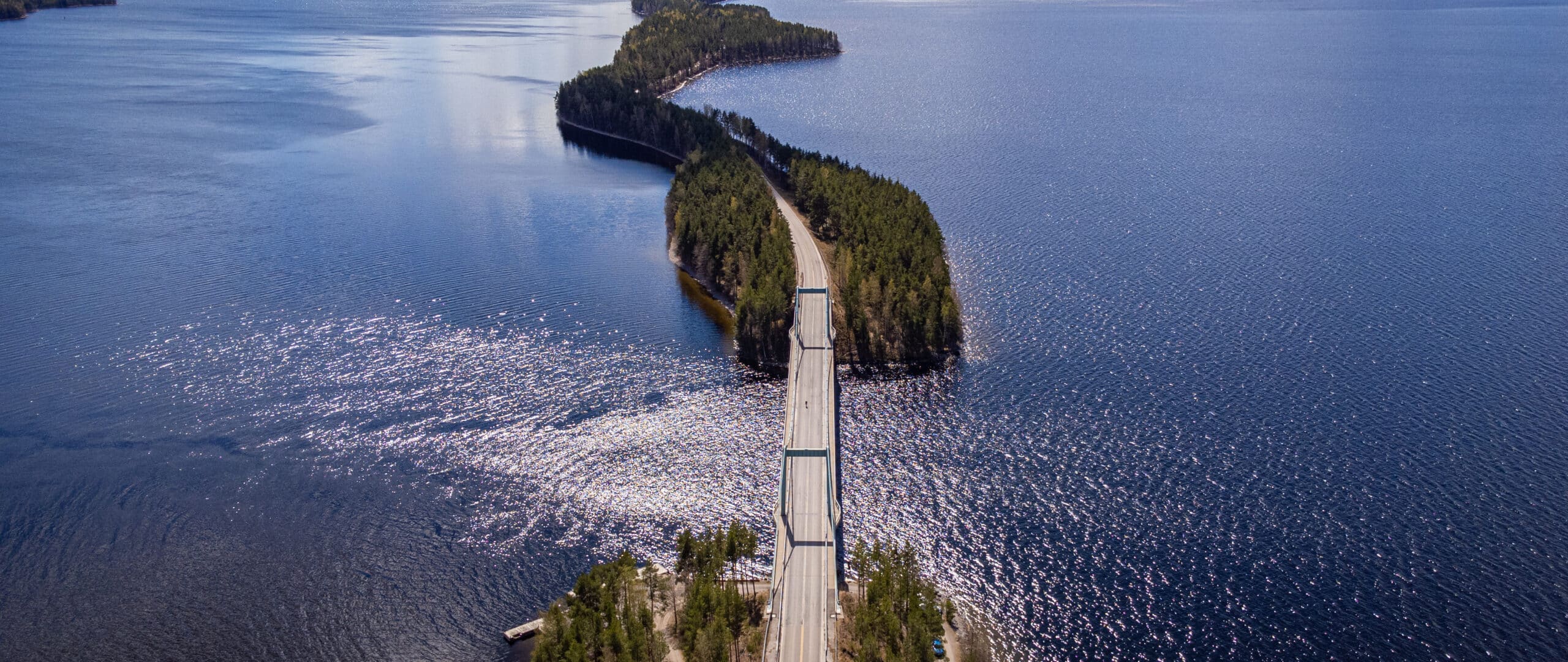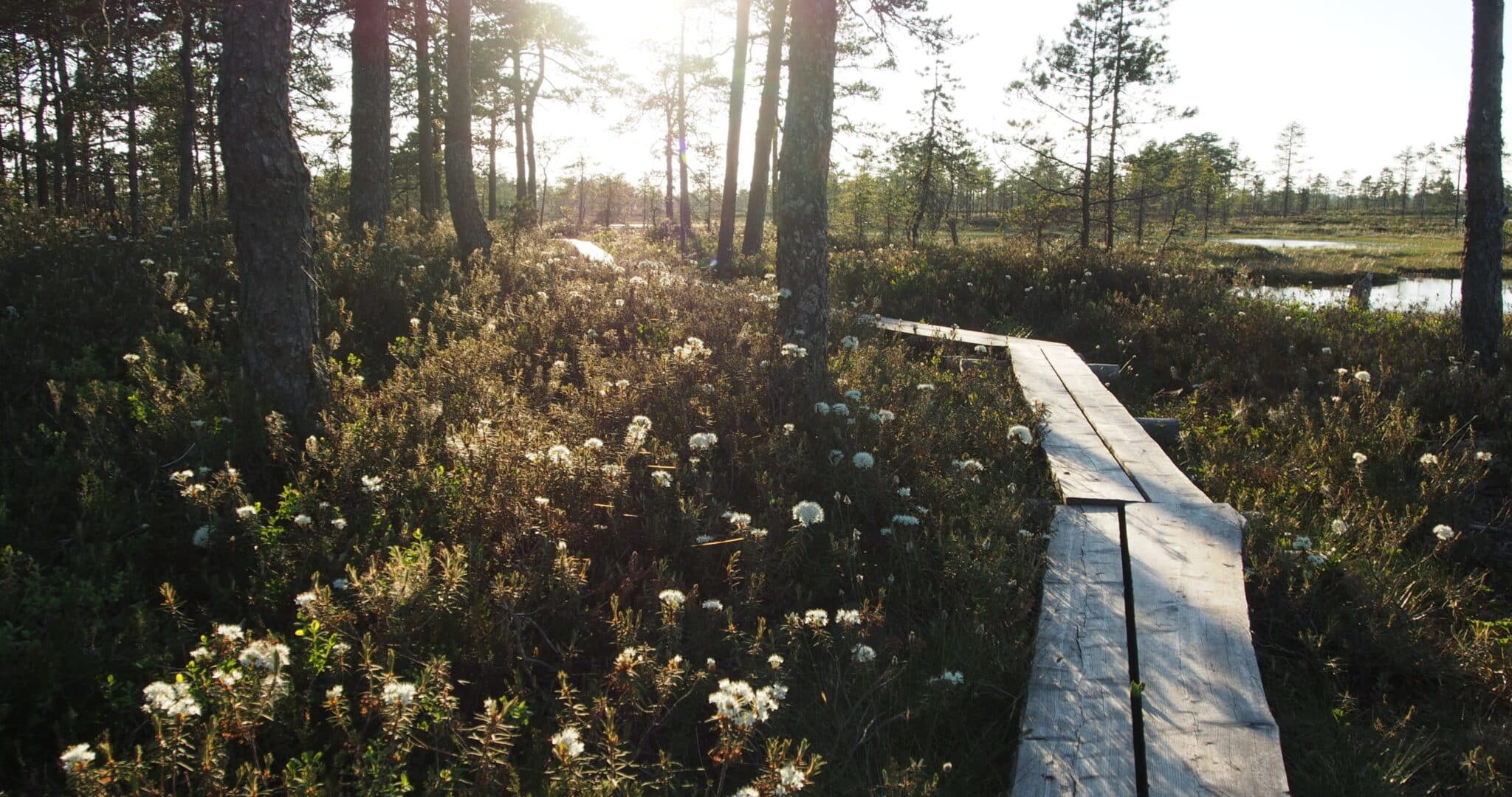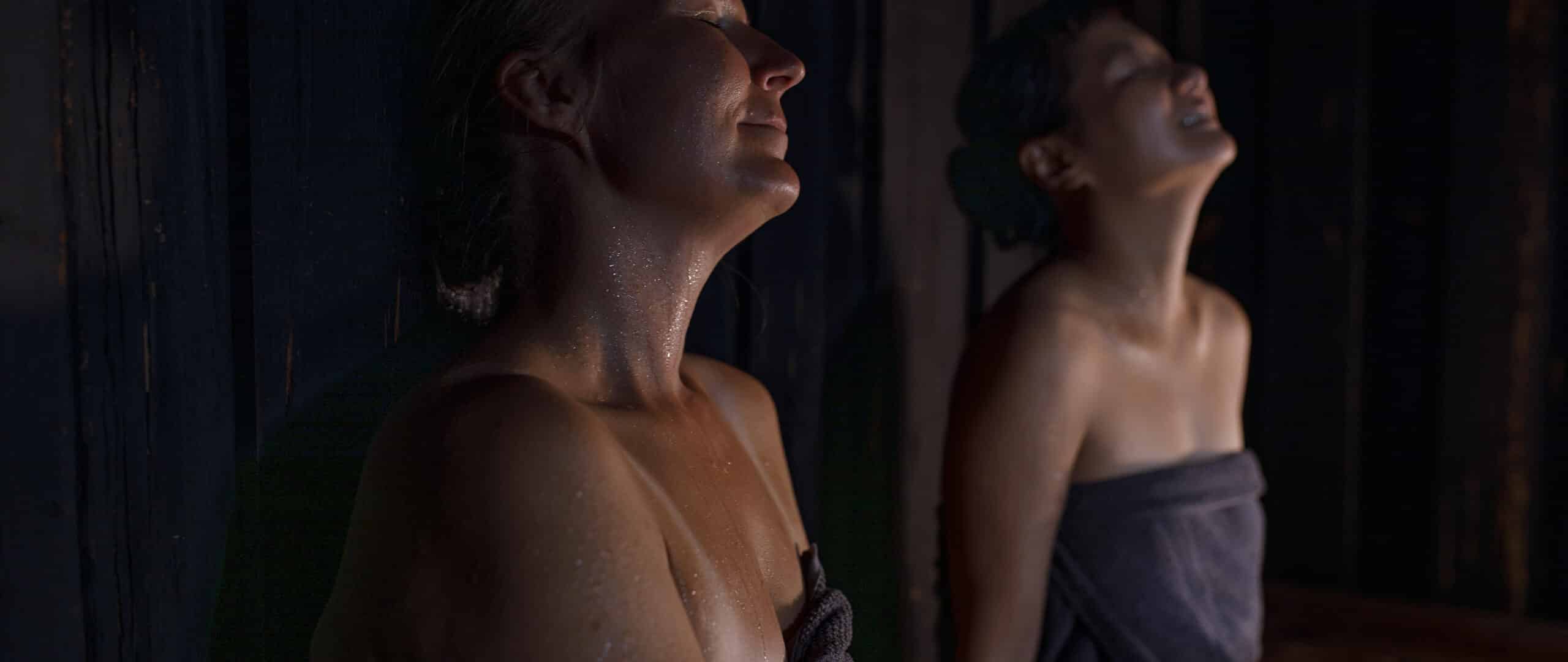From culture to nature: UNESCO designated sites in Lakeland Finland
Lakeland Finland has several highlights to offer when it comes to UNESCO designated sites. If you want to experience world heritage in Finland, this is the region for you. Petäjävesi Old Church and the Oravivuori Trigonometric Point are two of the country’s seven World Heritage Sites. They could hardly be more different.
In addition, three UNESCO Global Geoparks are part of Lakeland Finland, which will inspire you with their extraordinary nature and diversity. The status of a UNESCO Global Geopark is a fairly new classification. It gives international recognition to sites that focus on the protection of the Earth’s geodiversity and promote the active involvement of local communities.
1. UNESCO World Heritage Site: Petäjävesi Old Church
Built between 1763 and 1765 under the direction of master builder Jaakko Klemetinpoika Leppänen, Petäjävesi Old Church, situated in the middle of the picturesque Lakeland Finland, is one of the most beautiful wooden churches in Finland. Its location on an isthmus between the two lakes Petäjävesi and Jämsänvesi makes it a wonderful postcard motif for today’s visitors. In earlier times, however, this had very practical advantages: Churchgoers could come to services by boat in summer and across the ice in winter.
After a new church was built in 1867, the old church was in danger of falling into disrepair, but fortunately the historical value of the building was recognised in time and the necessary maintenance measures were initiated. Finally, in 1994, Petäjävesi Old Church was added to the UNESCO World Heritage List as an outstanding example of Nordic wooden architecture. It attracts about 14,000 visitors a year. In the summer season from June to August, tours are possible every day, in winter by appointment only. Situated just about 30 kilometres from Jyväskylä city centre, Petäjävesi Old Church is an excellent day trip from there.
Read more about Petäjävesi Old Church ↗
2. UNESCO World Heritage Site: Struve Geodetic Arc: Oravivuori Arc Point
The Oravivuori Arc Point is a triangulation point of the so-called Struve Geodetic Arc. It was laid out and measured between the years 1816 and 1855 and was used to measure the earth. Struve Geodetic Arc spreads across Lakeland Finland and has been part of the UNESCO World Heritage List since 2005. In the Jyväskylä Region, in the heart of Lakeland Finland, is the Puolakka measuring point, one of six measuring points in Finland.
Situated on the top of Oravivuori Hill in Korpilahti, a triangulation tower has been built at the measuring point. From up here you can enjoy a fantastic view of the Päijänne lake landscape, which can only be found in a few places. From the car park on Vanhanpääntie Road, which offers limited parking, a well-maintained nature trail about one kilometre long leads you to the tower. It’s a climb worth making!
Read more about Struve Geodetic Arc: Oravivuori Arc Point
3. Salpausselkä UNESCO Global Geopark
Salpausselkä Geopark was added to the prestigious network of UNESCO Global Geoparks in April 2022. The Geopark stretches from the first Salpausselkä ridge to the southern Päijänne, Finland’s second largest lake. Some of the country’s oldest settlement areas can be found here. The UNESCO Global Geopark covers the territory of the municipalities of Lahti, Asikkala, Heinola, Hollola, Padasjoki and Sysmä.
Formed by glacial meltwater at the end of the last Ice Age, the Salpausselkä ridges and the winding eskers were formed from sand and gravel long before our time. This unique landscape separates southern Finland from Lakeland Finland. About a quarter of all people living in Finland get their drinking water from the Geopark area. Experience outstanding geological heritage in peaceful forests within a walking distance from the city centre, in the surroundings of the Lahti Sports Centre. You should also visit Vierumäki Resort with enchanting nature paths running along steep-sided eskers between clearwater lakes. Päijänne National Park protects pristine archipelago nature of the large lake and offers a few hiking trails in the islands.

4. Lauhanvuori–Hämeenkangas UNESCO Global Geopark
About an hour’s drive northwest of Tampere, Lauhanvuori-Hämeenkangas UNESCO Global Geopark covers the territory of the three regions of Pirkanmaa, South Ostrobothnia and North Satakunta. Since July 2020, the nature tourism area has been part of the worldwide network of UNESCO Global Geoparks. Where two billion years ago there was a mountain range, today you will find extremely varied landscapes characterised by numerous geological features.
Mystical moors and extensive woodlands, idyllic river valleys and picturesque cultural landscapes characterise the Lauhanvuori-Hämeenkangas UNESCO Global Geopark. You can wander through peaceful pine forests on nature trails and hiking paths, take a break and indulge yourself at clear lakes or cosy cafés and restaurants. The Hämeenkangas moraine ridge and the Haapakeidas Mire Reserve show how diverse and enchanting Finland’s nature can be.
Read more about Lauhanvuori-Hämeenkangas UNESCO Global Geopark ↗
5. Saimaa UNESCO Global Geopark
Saimaa UNESCO Global Geopark is a treasure of Eastern Finland, known for its pristine lake nature and stunning water labyrinths that have shaped into their current splendor over millions of years. The Saimaa UNESCO Global Geopark spans across nine municipalities: Imatra, Lappeenranta, Mikkeli, Juva, Puumala, Ruokolahti, Savitaipale, Sulkava, and Taipalsaari.
Saimaa UNESCO Global Geopark brings together the beautiful natural attractions of Saimaa, charming hiking trails, and historical cultural sites, all of which nature travelers should definitely experience when visiting Saimaa. Through breathtaking sites and unique landscapes, the story of the birth of Saimaa unfolds in a completely new way through the Geopark.
Get to know more about the Saimaa UNESCO Global Geopark ↗
6. Finnish sauna culture on UNESCO’s list of Intangible Cultural Heritage
With an estimated three million saunas, sauna culture is omnipresent in Finland and an integral part of everyday life. The positive effects of regular sauna bathing on health are widely recognised. Since December 2020, sauna culture has also been listed on UNESCO’s list of Intangible Cultural Heritage.
According to UNESCO’s explanation, Finnish sauna culture is “far more than pure body care. In a sauna, people cleanse their bodies and minds and embrace a sense of inner peace”. Immerse yourself in the authentic Finnish sauna culture, which you can experience nowhere better than in the world’s sauna capital Tampere, in the “sauna region” of the world, the Jyväskylä Region, and everywhere in Lakeland Finland.
Read more about the 10 ways to experience sauna in Lakeland Finland
